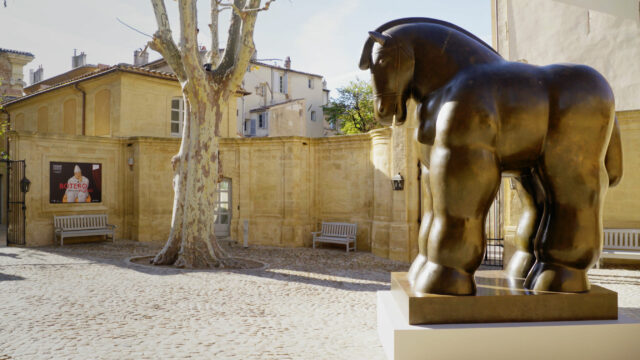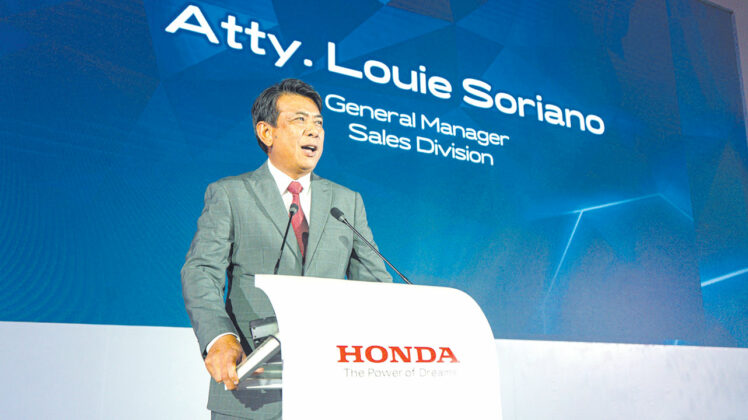AI could unlock growth opportunities for PHL

By Luisa Maria Jacinta C. Jocson, Reporter
THE PHILIPPINES should take advantage of the shift to artificial intelligence (AI) technologies, which is expected to generate growth opportunities for many industries, analysts said.
Moody’s Investors Service said in a Sept. 6 report that AI and other transformative technologies have the potential to “reshape entire industries” and “drive the emergence of new sectors, possibly in content generation, mobility, education, or healthcare fields.”
New technologies, it said, will boost growth by increasing productivity through task automation, process optimization, and enhanced decision making.
However, Moody’s also noted that AI may displace industries and workers and may increase inequalities due to the potential demand for high-skilled workers.
The Philippines ranked 54th out of 181 countries in a 2022 Government AI Readiness Index by Oxford Insights.
Ria Ysabelle Flora, Aboitiz Data Innovation Lead for Power Solutions, said increased AI adoption would benefit a number of industries and sectors, such as finance, in the Philippines.
“With the help of tech and AI, banks that used to work on decades-old systems now are slowly realizing the importance of overcoming their technical debt,” she said in a Viber message.
Ms. Flora said engineering-centric industries such as energy and manufacturing are also seen to gain through business process optimization brought by AI.
“I see a lot of value potential in AI coming into the energy sector,” she added.
AI is also expected to bring more opportunities for growth in the Information Technology and Business Process Management (IT-BPM) industry.
IT and Business Process Association of the Philippines (IBPAP) President Jack Madrid said that generative AI (GenAI) holds exciting potential for customer service.
Full-scale implementation of GenAI could boost productivity by 50% or even more, he said, citing studies.
“In contrast to traditional AI, which relies on rule-based systems or standard machine learning algorithms, GenAI goes further by understanding context, creating coherent and contextually appropriate responses, and handling customer inquiries more effectively,” he said in an e-mail.
“It can decode complex customer questions, discerning nuanced intent, sentiment, and context, leading to accurate and relevant responses. By leveraging customer data, GenAI provides personalized answers and suggestions, enhancing the customer experience with tailored solutions,” he added.
Mr. Madrid said that GenAI can make the workforce more productive by automating repetitive tasks and allow them to focus on more judgment-sensitive activities.
“GenAI will create demand for people adept at leveraging AI technologies to drive innovation and growth. As the demand for AI applications and customization grows, the need for skilled AI prompt engineers becomes more crucial,” he added.
Mr. Madrid said that it will be crucial for the IT-BPM sector to harness GenAI. “By embracing this cutting-edge technology, we not only propel our IT-BPM industry to new heights of efficiency and innovation but also fortify the nation’s position as a beacon of progress in the digital age.”
OTHER SECTORS
AI is seen to boost Philippine growth by 12% in 2030, equivalent to $92 billion, according to a report by EDBI and Kearney.
Economist Intelligence Unit analyst Laveena Iyer said the launch of ChatGPT in November 2022 spurred an intense debate about how AI will affect and benefit businesses and consumers.
“Many companies are already using forms of AI or machine learning for various purposes, from automation of manual processes to predicting and fulfilling customer demand,” Ms. Iyer said in an e-mail.
She said the benefits of leveraging AI would depend on the pace of adoption, a country’s digital infrastructure and regulatory framework.
The consumer goods sector, particularly e-commerce, would also gain from AI technologies, she added.
Ms. Iyer noted that retail companies are using AI for predictive analysis and use geolocation data to refine transparency in their supply chains.
“In the Philippines, online retail sales grew sharply owing to the pandemic, and we expect it to account for more than 9% of total retail sales market by 2027 (from less than 3% of the overall market in the pre-pandemic period). We could expect some of the major market players to adopt AI as they go ahead, if they haven’t already,” she added.
Senti AI Founder and Chief Executive Officer Ralph Vincent J. Regalado said that it is “inevitable” that technologies will change the ways people work, regardless of the industry.
“AI is meant to help people and businesses become more efficient and that should translate to better productivity, better output, and of course, increased returns that will reflect on a macroeconomic scale,” he said in a Viber message.
While the Philippines isn’t at the forefront of tech adoption, Mr. Regalado said the government’s push for digital transformation and the private sector’s interest in AI solutions is a “good sign.”
Industries that are customer facing, he said, could also benefit from AI solutions, like conversational AI or data analytics.
“The way I see it, those that would benefit the most from emerging technologies are not sectors, but specific organizations that have identified a use case where they can apply these technologies,” he added.
Adopting AI technologies will ultimately lead to adjustment in business operations and the overall economy, Rizal Commercial Banking Corp. Chief Economist Michael L. Ricafort said in a Viber message.
This would require “fine-tuning some functions to adapt to AI, a technology that could be further harnessed to further boost efficiency and overall productivity of businesses, education, and other institutions such as government functions,” Mr. Ricafort said.
RISKS
According to Aboitiz Data Innovation’s Ms. Flora, the biggest risk is believing that AI can “solve anything.”
“Technology for technology’s sake is very dangerous because it retrofits solutions to problems that may be deeply entangled with other exogenous factors,” she said.
Ms. Flora said that many firms are eager to utilize ChatGPT and other similar technologies to deploy as chatbots, hoping these would increase sales.
“However, marketers and executives often forget that these models and technologies would only be effective if the rest of their sales pipeline is efficient and ready to accommodate the possible surge of sales leads,” she added.
For his part, IBPAP’s Mr. Madrid said the disruption from GenAI should not be underestimated.
“There is a consensus that it may lead to substantial workforce reductions in certain industries and job roles, necessitating large-scale reskilling initiatives to address changing talent needs,” he said.
Mr. Madrid said that studies suggest that graphic designers, journalists, photographers, social media influencers, authors, educators, and linguists may experience significant changes due to AI.
There is also the risk of displacing low-skilled workers and jobs.
“There could be job displacements, especially if it’s a low-level and repetitive kind of job that can be automated. But again, workers at risk of displacement should be upskilled to take on new jobs created due to AI adoption,” Senti AI’s Mr. Regalado said.
Workers and businesses would need to adjust to these changes.
“Some jobs may be considered obsolete if it can be done by AI, but those displaced workers should be trained to do new jobs created by the changing business landscape,” he added.
Mr. Madrid said that upskilling the workforce will be key to adapting to new roles and meeting evolving demands.
“In this new era, GenAI will not merely automate tasks but also assist in equipping the workforce with new skills,” he added.
Mr. Regalado said that public and private sectors should ensure that the right policies and regulations are in place to be ready for AI adoption.
“Do we have enough regulations in place to make sure our data is secure, and that AI will be used for good? Do we have the infrastructure to support tech adoption? Does our workforce have the digital literacy and skill to keep up with the changing demands of the business landscape? These are the things we have to fix if we want the Philippines to reap the full benefits of AI,” he added.
Data privacy is also at risk with the increased use of AI. “AI relies heavily on data. A lot of it, and most likely, very sensitive as well. Organizations have to make sure that they have very secure data storage to avoid any breaches. Another risk is that the models used may exhibit bias if it was not trained properly, or if it was not fed the right kind of data,” Mr. Regalado said.
He noted organizations should make sure to do a risk assessment before adopting AI.
Terry L. Ridon, a public investment analyst and convenor of think tank InfraWatch PH, said that AI technology cannot fully replace the high-level analytical and custom work of professionals.
“While the disruption that may be caused by AI is concerning, particularly on the prospect of massive job loss, unless it is able to fully replicate the best attributes of employees at all levels of employment, the humans are here to stay,” he said in an e-mail.
Mr. Ridon said that AI models can provide big data confirmation of professional-created analysis at best, but it will still be limited to the breadth of information inputted to the model.
“Corporates, particularly public-facing firms, should also determine the role of AI in managing its customer service experience, as many consumers will still opt to be able to speak or chat with an actual person to immediately resolve their concerns,” he said.
AI models can also make errors, and clients may harbor negative sentiment due to the lack of accountability in the mistakes of AI models, Mr. Ridon said.
“The best attributes (of humans) are not just their capacity to churn out information to end users, it includes the ability to process and analyze complex information, the ability to take responsibility for all decisions and action, and most importantly, the ability to empathize with others,” he added.




















